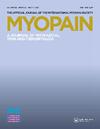A Systematic Review of Neurofeedback as a Treatment for Fibromyalgia Syndrome Symptoms
引用次数: 12
Abstract
Abstract Objectives: Fibromyalgia syndrome [FMS] is a musculoskeletal condition that is defined by widespread pain, mood disturbance, and cognitive dysfunction. There is debate surrounding the causes of this disorder, with growing attention being placed on central nervous system [CNS] abnormalities. Neurofeedback is a form of biofeedback that is designed to alter neurophysiological processes using electro-encephalogram [EEG] technology. This review includes systematic examination and comparison of neurofeedback interventions used to treat FMS symptoms [i.e. pain, fatigue, cognitive function, depression, anxiety, FMS impact]. Systematic searches were conducted on PubMed, PsycINFO, Cochrane Library, Medline, Web of Science, and the Society of Behavioral Medicine listserv for published and unpublished reports of interventions studies. Findings: Seven of the identified 255 studies met the criteria for inclusion. Three of these reports described traditional neurofeedback interventions and four described alternative neurofeedback training. There was a significant variability in terms of study design, intervention procedures [length and number of treatment sessions], and overall study quality. The traditional neurofeedback articles were ranked as having the poorest quality and reported greatest symptom improvements in response to neurofeedback as a monotherapy. The articles describing alternative neurofeedback varied in their global quality and provided mixed results with regards to its efficacy as a treatment. Conclusions: The research provides initial evidence of the utility of neurofeedback in the treatment of FMS symptoms; however, additional high quality research is needed.神经反馈作为纤维肌痛综合征症状治疗的系统综述
目的:纤维肌痛综合征(FMS)是一种以广泛疼痛、情绪障碍和认知功能障碍为特征的肌肉骨骼疾病。随着人们对中枢神经系统异常的关注越来越多,围绕这种疾病的病因一直存在争议。神经反馈是生物反馈的一种形式,旨在利用脑电图技术改变神经生理过程。本综述包括系统检查和比较用于治疗FMS症状(即疼痛、疲劳、认知功能、抑郁、焦虑、FMS影响)的神经反馈干预措施。在PubMed、PsycINFO、Cochrane Library、Medline、Web of Science和Society of Behavioral Medicine listserve上进行了系统搜索,以获取已发表和未发表的干预研究报告。结果:255项研究中有7项符合纳入标准。其中三份报告描述了传统的神经反馈干预,四份报告描述了替代的神经反馈训练。在研究设计、干预程序(治疗疗程的长度和次数)和总体研究质量方面存在显著差异。传统的神经反馈文章被评为质量最差,并报告了神经反馈作为单一疗法的最大症状改善。描述替代神经反馈的文章在其整体质量上各不相同,并且提供了关于其治疗效果的混合结果。结论:该研究提供了神经反馈治疗FMS症状的初步证据;然而,还需要更多高质量的研究。
本文章由计算机程序翻译,如有差异,请以英文原文为准。
求助全文
约1分钟内获得全文
求助全文

 求助内容:
求助内容: 应助结果提醒方式:
应助结果提醒方式:


